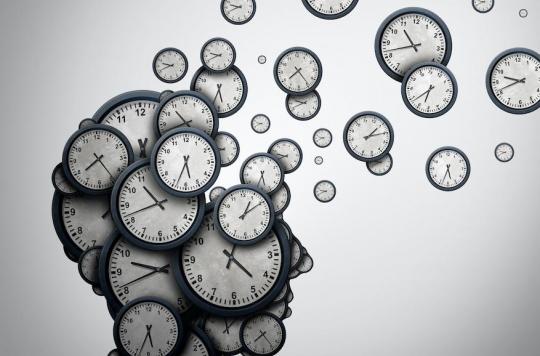Specific neurons, housed in the parietal cortex, are involved in our perception of time, which is based on stimuli and therefore highly biased.

- For the first time, researchers have succeeded in demonstrating that our perception of time is based on stimuli and not on the real time that passes.
- This happens in the supramarginal gyrus (SMG) neurons of the parietal cortex.
- Repetition would lead to neuronal fatigue leading us to misjudge the time that passes.
Our perception of time is strongly biased. It is based on stimuli between several sounds which, after repetition, distort our perception. For the first time, researchers have managed to identify the areas of the brain involved, in this case the parietal cortex, located at the back of the top of the skull. The American and Japanese scientists achieved this by examining brain activity by MRI and published their results on September 14 in the Journal of Neuroscience.
Perception based on stimuli
Understanding how our brain perceives time is essential but remains very complex since it depends on many factors. “The ability to accurately represent time is essential to optimize perception and motor controlsay the researchers. Although the consequences of these contextual factors have been well described behaviorally and incorporated into time calculation models, the neural origin of these effects remains poorly understood..”
Scientists have come to understand that our brain perceives a time that is not the one that actually passes. Previous studies have highlighted the role of the parietal cortex whose neurons in the supramarginal gyrus (SMG) activate to estimate time without researchers being able to know if it is calibrated to real time or to its interpretation of it. this. This time, they managed to make a difference. For this, they passed a functional MRI to 20 volunteers who were subjected to visual and auditory stimuli, all less than one second. It is first a gray circle which is displayed 30 times in a row for either 250 milliseconds or 750 milliseconds. Then, this round reappeared for a duration chosen at random from four possibilities between 350 and 650 milliseconds. Finally, white noise with a fixed duration of 500 milliseconds was played.
Activity in the SMG reflects our subjective experience of time
After the first phase, the volunteers tended to overestimate the duration of the following rounds. Conversely, when the circles appeared longer, the participants underestimated the duration of the other circles. fMRI analysis confirmed this biased perception of time. In those, the estimation error was the greatest, the modulation of the activity of the SMG neurons was also the strongest, proving their implications in our perception of time. “These results suggest that activity in the SMG reflects our subjective experience of time.”, the researchers concluded. The latter believe that the perceived duration estimation bias comes from the alteration of the response properties of the neurons calibrated over a duration. Repetition would lead to neuronal fatigue leading us to misjudge the time that passes.
.

















